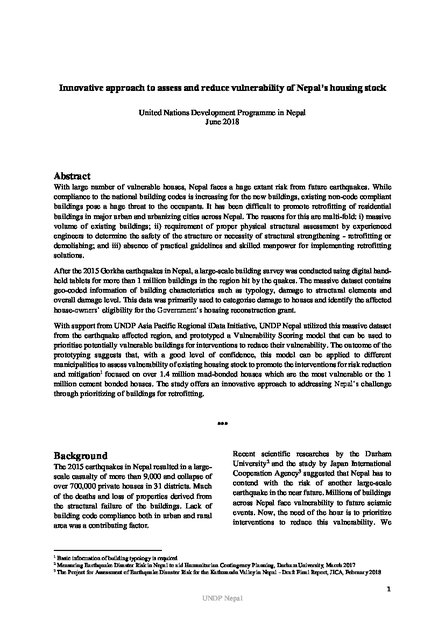
This paper demonstrates the result of data analytics undertaken on the massive building damage survey data collected by the Government of Nepal after the 2015 Gorkha earthquakes. The data of more than 1 million buildings contained geo-coded information of building characteristics such as typology, damage to structural elements and overall damage level. This dataset was primarily used to categorise damage to houses and identify the affected house-owners’ eligibility for the Government’s housing reconstruction grant.
By utilizing this data, UNDP Nepal together with the Institution of Engineering of the Tribhuvan University undertook a data analytics to prototype a model to help identify vulnerable buildings among existing building stock outside the earthquake affected area. The high-volume and high-granularity survey data was combined with soil and slope data to generate an algorithm of vulnerability scoring, and the model was tested outside the earthquake-affected municipalities. It is recommended that further data (pre and post-earthquake) is fed into the model for improved prediction of vulnerability in the future. Overall, the outcome of this study offers significant potential in supporting actions or decisions by the policy makers, municipalities, citizens and other parties who promote disaster risk reduction in Nepal.
